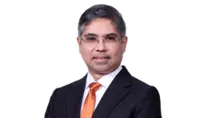GOOD investment is likely to yield positive returns.
The same principle applies to matters of student learning. Diligent effort from key players, such as students, teachers and parents, should lead to favourable outcomes.
A stark contrast, however, can be observed in one facet of Malaysian education.
While student outcomes cannot solely be based on teacher performance, it is concerning to see the massive disconnect between the two, say experts.
According to a recent World Bank report on the country’s education system, teachers employed by the Education Ministry (MoE) performed very well in performance evaluations from 2015 to 2020, with only 0.02% of teachers scoring below 60%.
“The high performance of teachers in these evaluations is at odds with the rates of teacher absence and student learning reported,” the World Bank Malaysia Economic Monitor (MEM) report, launched on April 25, read.
Titled Bending Bamboo Shoots: Strengthening Foundational Skills, the report revealed that about 40% of Grade Five students assessed in the Southeast Asia Primary Learning Metrics (SEA-PLM) 2019 reported unexpectedly high teacher absence rates, relative to under 10% in Vietnam.
In addition, the report highlighted that by the end of Grade Five, 42% of Malaysian students cannot read a grade-appropriate paragraph with comprehension, and that by the age of 15, they lag behind aspirational peers in reading, mathematics and science as measured by international assessments (see infographic).
The report emphasised that Malaysia’s teacher evaluation system must link teacher performance with student learning.
“While teacher effort is important, if it is not leading to improved student learning, then more is needed,” it said.
Implementation is key
Teach For Malaysia (TFM) chief executive officer Chan Soon Seng said with only 0.02% of teachers scoring below 60% in performance evaluations, this means that less than 90 out of the more than 400,000 teachers are underperforming.
While acknowledging the MoE’s relatively robust teacher evaluation system, he said the key to stronger evaluation lies in implementation.
“First, shifting away from the time-based progression system to a more merit-based progression system would incentivise teachers to advocate for a more rigorous distinction between high- and low-performing teachers.
“Next, implementing a more robust exit policy for underperforming teachers – as outlined in the Malaysia Education Blueprint (MEB) 2013-2025 – will ensure that there are actual consequences for poor performance,” he told StarEdu.
He added that one way of strengthening teacher performance evaluation is through the use of student feedback.
Citing TFM fellows’ collection of anonymised student feedback, he noted that the survey – which measures student perceptions on 19 key topics, ranging from teaching effectiveness to classroom culture – has been validated to show a correlation between student perception and learning outcomes.
Universiti Malaya Education Faculty senior lecturer and teacher-trainer Assoc Prof Dr Zuwati Hasim said a multifaceted approach is needed to evaluate teacher performance with the purpose to improve and promote professional development among teachers.
“One method is to conduct periodic observations either by school administrators or the teacher monitoring committee,” she said.
She added that honest reporting is necessary to reflect the realities on the ground.
“If the ministry is serious about improving the education system, the focus should not solely be on curriculum or assessment reforms, but also on implementation and practices, which require integrity among practitioners,” she said.
Arus Academy co-founder Alina Amir also called for a transparent evaluation of teacher performance, adding that there must be an emphasis on upholding professional ethics and standards.
“This should include a system of regular feedback and professional development opportunities to support teachers in continuously improving their content knowledge and pedagogical skills.
“This could look like peer observations, coaching, and access to relevant training programmes,” she said.
Parent Action Group for Education Malaysia (Page) chairman Datin Noor Azimah Abdul Rahim said the metrics used to assess teachers need to be scrutinised as data can be manipulated to “show a pretty picture”.
“The School Inspectorate used to play a crucial role in teacher assessment. However, little is now heard about unannounced school inspections.”
She added that principals should be made accountable for teacher absenteeism.
“There is an accountability issue where no one is held responsible for teacher non-performance.
“The exit policy should be strengthened to remove irresponsible and dishonest teachers from the system,” she asserted.
Weighing in, National Union of the Teaching Profession (NUTP) secretary-general Fouzi Singon proposed that the School Inspectorate be enhanced in its role and function to ensure quality assurance in education standards.
“An annual report should be made available to the public to inform them about their children’s learning levels.
“The ministry’s Educational Policy Planning and Research Division should study every aspect that measures educational achievement. Their findings should be shared to ensure this division serves as a check and balance for educational policies,” he said.
Bigger budget for training
Fouzi also emphasised the importance of enhancing teacher competencies through training programmes.
“The budget allocated for teacher training has decreased compared to those before the year 2000,” he said.
Breaking down the figures, Chan said the MoE’s budget allocation for in-service teacher training is RM14mil.
“This is equivalent to about RM34 per teacher, which is a tiny fraction of the over half a billion spent on pre-service training.
“We need to invest much more in high-quality continuous professional development (CPD) that addresses teachers’ development needs,” he stressed.
He added that there is a pressing need to close learning gaps by empowering teachers to deliver differentiated instruction tailored to their students’ actual mastery levels.
According to the World Bank report, 57% of Malaysia’s Grade Five students have teachers who are not trained in differentiated instruction (see infographic).
“The role of coaches and mentors needs to be strengthened, as in-school and in-class support is critical for helping teachers implement new techniques learnt in CPD workshops and change the way they teach,” he said.
Echoing their sentiments, Zuwati said allocating budget for formal training of in-service teachers will allow them to acquire knowledge and skills, “rather than expecting the teachers to find their own initiatives for improvement”.
“CPD opportunities, such as workshops, courses and peer learning communities, are very much needed to help teachers stay updated with the latest teaching methodologies,” she said. Fostering a culture of continuous improvement and a commitment to high-quality teaching practices that prioritise the holistic development of students is vital, Alina added.
“Teachers must have the necessary skills and support to positively impact student learning outcomes across various domains, including academic achievement and character development,” she said.
Noor Azimah advocated for all teachers to undergo both pre-service and in-service training.
“All teachers should be trained to teach students to read at their respective levels and then gradually elevate as they progress,” she said, referencing the World Bank report, which indicates that only about 40% of Malaysian students are taught by teachers who received both pre-service and in-service training in reading instruction (see infographic above).
Joining the debate...
World Bank lead economist (Education) Dr Lars M. Sondergaard
Shifting goalposts
What I recommend as the first step is to set goals for Grade Two or Three students. If 42% of your fifth-graders are not meeting international benchmarks, it’s because a large proportion of your second- and third-graders are not there. If you focus on some of the interventions – like making every child ready for school, improving teacher quality and teaching at the right level – that have been shown to work in many different contexts around world, I have no doubt you could get your second- and third-graders to read at the minimum proficiency level.
New curriculum vs teachers
What we often see is that countries think a new curriculum is the solution to all their problems but as with everything in education, it’s the implementation that makes or breaks. Whether a new curriculum is influential largely depends on whether teachers can master the new curriculum. Good teachers in one academic year move us one-and-a-half years ahead. The solution is in front of us: making sure our teachers are star teachers.
World Bank lead economist and programme leader (Human Development) Dr Tara Beteille
Teacher support
There are several studies which tell us about how important teachers are to the student learning experience. In fact, teachers are the single most important school-based input for improving student learning. While Malaysia has been doing a lot in terms of teacher professional development, it still has some distance to go in terms of providing these teachers the support to handle very difficult classroom situations.
Education deputy director (Teacher Professionalism Division) Dr Nor Foniza Maidin
Active adjustments
At the MoE, we are looking into several changes, such as coming up with a new curriculum in 2027, enhancing literacy and numeracy skills among Years One and Two pupils, and focusing on teacher training and development. We are exploring various methods to develop teachers, not only through seminars and workshops but also through fostering innovation, critical thinking, and addressing the diverse needs of children.
Teacher and HIVE Educators coordinator Auzellea Kristin Mozihim
Mindset and resources
Teachers must have an entrepreneurial mindset. They must have high levels of innovativeness and strategic thinking. This mindset can be applied to school and classroom practices, as well as to building partnerships within and outside of schools. Teachers also need to have resources, such as social capital for collaborating with social enterprises, and decision-making capital for involvement in school administration. Without these supporting systems, teachers cannot achieve as much.
Note: Beteille was a presenter at the MEM report launch – officiated by Economy Minister Mohd Rafizi Ramli – at Sasana Kijang, Kuala Lumpur, on April 25; Sondergaard, Nor Foniza, Auzellea and Arus Academy co-founder Alina Amir were speakers at the subsequent panel discussion.















